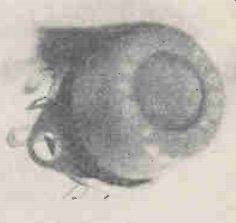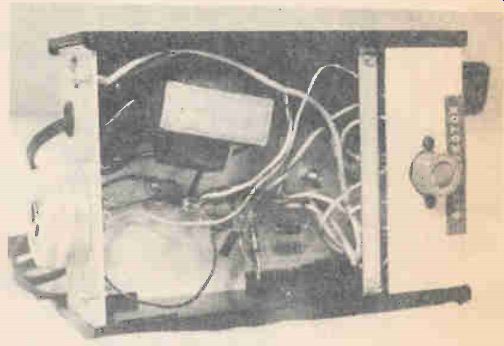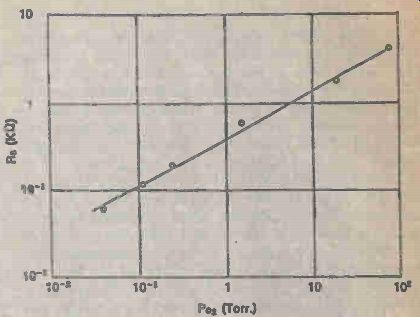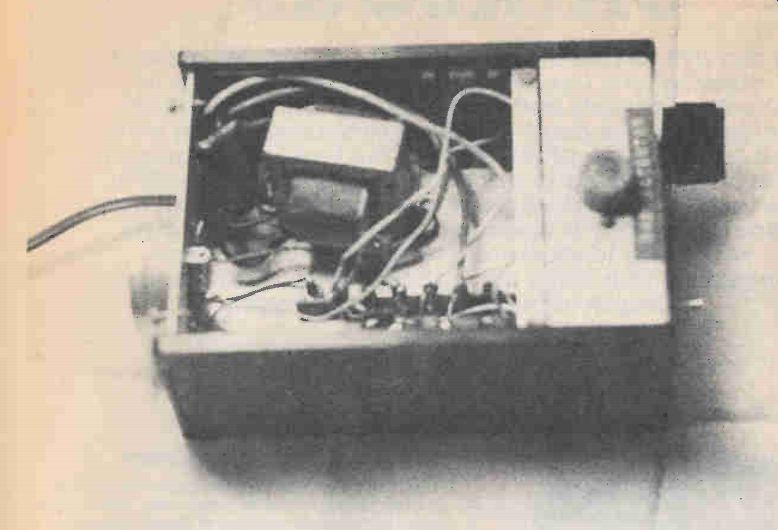Build This Alarm for Carbon Monoxide and Noxious Gases
by Cass Lewart
The Gas Alarm project described in this article detects carbon monoxide (CO) and other noxious, flammable and poisonous gases. The alarm is equipped with stand-by rechargeable batteries which take over in case of power failure. When the alarm detects carbon monoxide, natural gas, gasoline fumes or one of many other flammable or "oxygen hungry" gases, it activates a warning buzzer.
The recent series of fatal hotel fires made it obvious that it is not always the hot flame and smoke that kill and main. Many people are killed or incapacitated by odorless, poisonous carbon monoxide, the product of incomplete combustion, which is frequently en countered far away from the source of the fire. For example, several members of a family in the township of Hazlet, NJ, were fatally poisoned when a defective furnace filled their house with carbon monoxide.
Early warning signs of headaches and nausea were simply ignored till the disaster struck.
What is even more frightening is that standard smoke detectors will not respond to carbon monoxide. The most popular ionized chamber or photocell type smoke detectors will only respond to hot gases or smoke which may not be present in areas away from the fire, in areas still subject to the danger of carbon monoxide poisoning. Similarly, natural gas leaking from a gas stove, or carbon monoxide escaping from a defective furnace will not trigger a standard smoke detector.
On the other hand, when properly adjusted, this Gas Alarm will sound its warning before carbon monoxide reaches dangerous levels. This Gas Alarm should be considered complementary protection only and not as a replacement for standard smoke detectors. For example the Gas Alarm will not respond to ionized gases generated by fire unless the fire is smoldering in an enclosed area which is lacking oxygen. Still, the Gas Alarm described here allows you to carry with you a portable protection both at home and whenever you stay in a hotel or motel.
The Gas Alarm is based on the inexpensive Taguchi Gas Sensor (TGS), shown in Figure 1 which changes its electrical resistance when exposed, to oxygen reducing gases such as carbon monoxide, methane, butane, alcohol vapors and many others. The sensor element is enclosed in a small capsule protected by stainless steel mesh. A low-power, 5-Volt heater activates the sensor element, and also purifies it after exposure to gas.

Figure 1. The Taguchi Gas Sensor, shown here, mounts on top of the
chassis, as seen in the other photographs. It is available from the
address in the parts list.

Figure 2. Inside view of Gas Alarm chassis shown here, the alarm buzzer
(next to AC line cord), the gas sensor (right), and power transformer,
middle top.
---------
HOW THE GAS SENSOR WORKS
The Taguchi Gas Sensor (TGS) is a entered, N-type semiconductor device composed mainly of SnO2 (tin dioxide), whose' conductivity increases in the presence of combustible gases such as hydrogen, carbon monoxide, methane, ethane, propane, or organic solvent vapors belonging to the alcohol, ketone, ester and benzol families etc.
The increased conductivity of the TGS when exposed to even a low concentration of gas can be as high as twenty times that of its conductivity in air. Such a' change can be brought about by the presence of 0.1% propane by volume which represents only 1/20th. of the lower explosive limit for propane. This large change enables a buzzer or relay to be directly actuated by the TGS. When used with a simple amplifier several hundred ppm of carbon monoxide can be readily detected.
When a gaseous molecule is absorbed on the surface of a semi-conductor, an electric charge transfer occurs between the surface of the semi-conductor and the absorbed molecule, due to the difference of the electron energy between them.
For example, when oxygen in air is adsorbed on the surface of an n-type semi-conductor device like TGS. electrons move from the device to the absorbed gas, and as a result oxygen is absorbed as a negative charge. Hence the density of conduction electrons in a space-charge layer of the semi-conductor decreases resulting in reduced conductivity.
Consequently, the oxygen pressure in the atmosphere and the conductivity of the device are mutually related. When the partial pressure of oxygen is reduced, the value of the electrical resistance of the device decreases. This is shown in the graph here.
Since the pressure of the oxygen which is in the air all around us is nearly always the same, heating the TGS to a fixed (steady) temperature results in a steady (constant) amount of oxygen being absorbed, and in the conductivity of the device (the TGS) remaining constant.
When oxygen-absorbing or combustible gases such as hydrogen, carbon monoxide, or others are present in the air, they are absorbed on the surface of the semi conductor as a positive charge thereby increasing the density of conductive electrons in a space-charge layer. Thus the conductivity of the device increases corresponding to the concentration of the gas present.

above: Relationship between the resistance of TGS (Rs) and
the Pressure of Oxygen (P O2)„
---------------
PARTS LIST FOR GAS ALARM
B1 - 6 Ni-Cad cells (AA, C, or D) Ri - 100-Ohm. 1/2 W resistor R2 -15-Ohm, 1W resistor R3 -270-Ohm 1 / 2 W resistor R4 -50-Kohm, linear potentiometer C1 -220-uF/16V capacitor D1, D2 -1A/200V silicon diodes Si -SPST miniature switch RECT -50V/1A full-wave rectifier LED -Red Light Emitting Diode IC1 -5-Volt regulator, 276-1770 4 Ti -110V/12V 1.2A transformer, 273-1352 BUZZ - Piezo electric buzzer, 273-068 SCR1 - 200V/0.8A or 200V/6A Silicon-controlled rectifier, 276-1067 TGS1 -Taguchi Gas Sensor. The sensor (with socket) is available from C&R Electronics, P.O. Box 217, Holmdel, 'NJ. 07733 for $14.95 + $1.00 for First Class postage and handling. New Jersey residents add 6% tax.
IC1, T1 Buzzer, and SCR numbers are Radio Shack stock numbers

--------------

Figure 3. This view of the alarm chassis shows the terminal mounting
strip (middle bottom, below the power transformer) on which resistors
and small capacitors are mounted. Most of the other connections are
made on this strip, too.
Circuit Description
The circuit is powered by an AC transformer, and also by stand-by rechargeable NiCad batteries. The 12-Volt transformer provides power for the heater of the sensor, charges the stand-by batteries, and energizes the piezo electric buzzer. The 5-Volt IC regulator controls the heater voltage and assures its uniform sensitivity.
A Silicon-Controlled Rectifier (SCR) triggers when the resistance of the gas sensor element is low enough to provide approximately 0.3 Volts at the SCR's Gate terminal. The piezo electric buzzer periodically interrupts the current flow so that the SCR does not latch; the buzzer can be silenced by simply turning down the CAL control. The LED shown whether the AC power or the stand-by power to the circuit is ON, and that the Gas Alarm is operating.
Construction
This Gas Alarm project will easily fit in a 6"x4"x2 1/2" metal cabinet. All components except for buzzer and sensor element can be mounted on a perf board or on multi-lug terminal strips. The project is easy to assemble, as point-to-point wiring is perfectly acceptable. The schematic of the circuit is shown in Figure 2. Except for the sensor element all components are available from your local electronics store as per the Parts List. Mount the socket for the sensor on top of the cabinet for maximum exposure to surrounding air. Mount the buzzer on the side or back of the cabinet for best sound.
Also see: Build a Signal Chaser
More from EH magazine: Tandy's Radio Shack
Adapted from: Electronics Handbook--Spring 1987